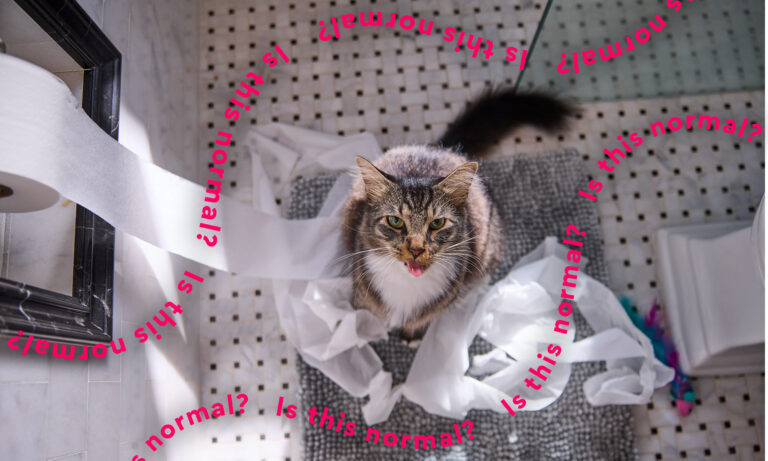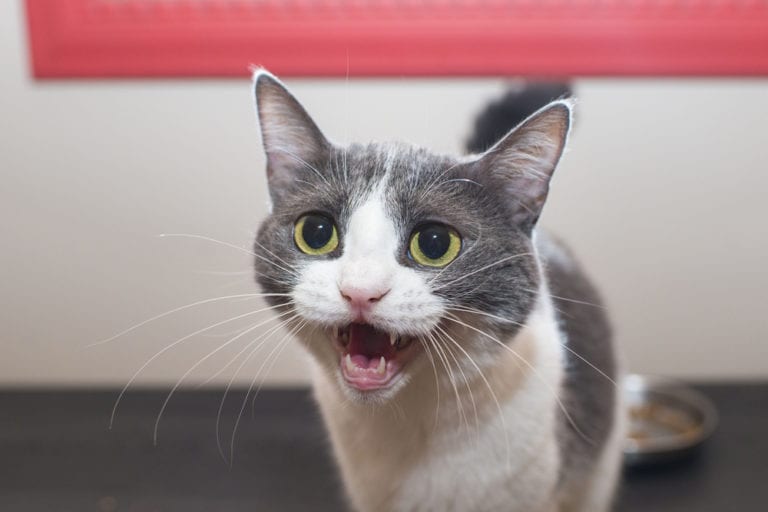Q:My cat loves to push on their bed or a blanket with their two front paws. I heard this is called “kneading.” She seems to love it and sometimes will even drool while doing it. Why do cats knead? Is it normal?
A: Yes, kneading is totally normal—and one of the greater joys of being a cat parent. More often than not, kneading is a behavior carried over from kittenhood, but it can also be performed to stretch out paws and mark territory.
Many a meme has been made about the fine art of biscuit making, yet most people don’t know a whole lot about this common cat behavior.
We talked to Cristy Brusoe, a certified cat behaviorist in Tampa, Florida, and Wailani Sung, DVM, DACVB, owner of Bay Area Vet Behavior in San Francisco, California, to get details on exactly what kneading is and to answer the age-old question: Why do cats make biscuits?
What Is Cat Kneading?

If you have a feline companion—or have perused any popular social media platform in the past couple of years—you’ve probably witnessed the adorable act of cat kneading.
Cat kneading is a behavior in which cats extend and flex the digits of their paws in a rhythmic motion on a soft surface (usually a blanket, bedding, or a person).
Other cute terms that people use to refer to kneading include, but are not limited to:
- Making biscuits
- Making bread
- Making pizza
- Making muffins
- Kneading dough
- Happy paws
- Paddling
- Treading
This cat behavior is normal and often traced back to kittenhood when they kneaded their mother’s belly to stimulate milk flow, says Brusoe. When an older cat kneads, it may trigger memories of nursing and be relaxing and comforting—which explains the drool that may occur during adult kneading.
Why Do Cats Knead?
We’ve learned that kittens start kneading early in life as somewhat of a survival skill to get milk from their mama, but why do adult cats continue the behavior?
Besides the pure nostalgia of it all, there are a few reasons that explain the behavior in older cats, according to our experts.
1. To Show Their Contentment and Relaxation
If your cat is making biscuits, it’s most likely because they feel nice and comfy and want to show it.
Kneading while nursing causes the release of oxytocin, which is a feel-good hormone that helps with maternal bonding. The kneading movement may remind cats of being in the comforting presence of their mother.
2. They’re Marking Their Territory
Cats have scent glands in their paws, and kneading their digits into an object is a way to mark territory by releasing pheromones that communicate with other cats, says Brusoe.
3. To Stretch
While some cats knead to relax, others are actually looking for a mini workout!
The act of kneading is also a way for your kitty to stretch and flex their paws.
“Stretching helps maintain muscle and tendon health, promoting flexibility and circulation,” says Brusoe. This is especially important if a cat is inactive or sedentary, since lack of action can lead to tight muscles and tendons.
4. It’s Soothing
Occasionally when a cat kneads, it looks a little bit more hostile than cozy. So why do cats pummel as opposed to knead at times?
The rhythmic motion of making biscuits is very soothing—and if you notice your cat getting a little aggressive with their biscuiting, it could be a sign of overstimulation or anxiety, says Brusoe.
“Kneading may be a behavior cats engage in when they are anxious or upset, and it may help calm them down,” adds Dr. Sung. “If they are agitated or aroused by a previous event, then they may engage in more aggressive kneading.”
If a cat is kneading more than normal, this could be a sign of pain; so, pet parents should take them to the vet to get them examined.
5. Their Personality Is Shining Through
If you have more than one cat, you may notice that one is constantly busy in the biscuit factory, while the others hardly work. Our experts say this is normal, and the frequency of kneading varies greatly and is influenced by individual personalities, past experiences, and levels of comfort.
“Some cats are simply more inclined to [do] this comforting behavior than others,” says Brusoe.
Dr. Sung points out, though, that outdoor kitties may not knead as much (or at all) because of a lack of places to relax, as well as a constant worry about predators.
What To Do About Your Cat’s Kneading
If you notice your cat is kneading a lot, what should you do? The likely answer here is nothing.
Our experts say that kneading is a natural and positive behavior, and there is no reason to actively encourage or discourage it—unless your cat is engaging in problematic behavior such as, say, ripping up your furniture (or your skin!) with sharp claws, or if your cat is suckling while kneading and ingesting the material they are kneading on.
That being said, there are a couple of things you can do to make the kneading experience more enjoyable for all involved.
Provide Soft Surfaces for Kneading
If your cat loves to knead, providing extra soft surfaces around the house, such as thick blankets, cushions, and/or pet bedding, is a nice gesture.
If they knead on you, you can place a towel between their paws and your skin to help avoid discomfort for both parties.
Some of our favorite pet bedding products are also waterproof, which is helpful if drooling is going on while kneading.
Trim Their Nails
Giving your cat a little manicure is helpful to prevent the nails from getting caught in blankets or tearing up furniture.
To properly clip your kitty's nails, you can use clippers or a grinder.
Apply Claw Caps
Besides adding a little color to your cat’s nails, soft claw caps are a great consideration if kneading with sharp nails seems to be an ongoing problem.
FAQs About Cat Kneading
Q:Why do cats knead blankets?
A:Cats like the soft texture of blankets on their paws, and the feeling may also recall memories of feeling comforted by their mother during nursing.
Wild cats would also knead grass to make a bed or a place to give birth.
Q:Why do cats knead me?
A:If your cat is kneading you, it’s because they like you! When cats knead people, it’s a sign of affection, trust, and bonding.
Q:Do cats knead because they're happy?
A:More often than not, kneading is a sign of happiness and relaxation. It is a comforting behavior, similar to when they were kittens with their mother.
Q:Why do male cats knead?
A:Male cats knead for the same reasons as female cats (comfort, relaxation, and marking territory, for example). There does not seem to be any research that indicates there is a sex difference in kneading.
Why Does My Cat Do That?
Share:















